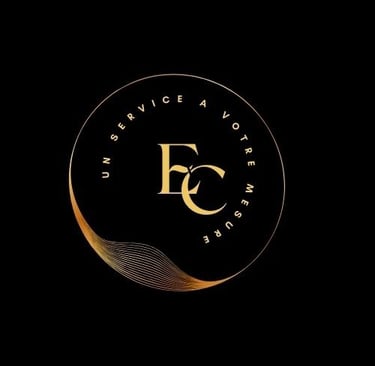Non-Verbal Communication: A Hidden Lever for Social Performance and Workplace Inclusion
Harnessing Non-Verbal Language for Stronger Teams, Inclusion, and Workplace Well-Being Discover how non-verbal communication strengthens team cohesion, fosters inclusion, and enhances workplace quality of life. A powerful tool for HR professionals and companies committed to CSR.
COMMUNICATIONDYNAMIQUE DE GROUPEMANAGEMENT
LYDIE GOYENETCHE
3/14/20255 min read


CSR: Values in Action
Corporate Social Responsibility (CSR) balances idealism and pragmatism. On one side, there's the vision: integrating social and environmental concerns to build a better world. On the other, the realities of business: performance, growth, and competitiveness. CSR aims to bridge these two spheres.
Take a simple example: a company that reduces its environmental impact by adopting cleaner processes while simultaneously cutting production costs through better resource management. The result? Stakeholders (customers, employees, investors) are satisfied, and financial performance improves—all within a sustainable management framework where daily actions align with a long-term vision.
CSR, when well-integrated, becomes more than a set of guidelines; it evolves into a genuine business philosophy. It influences strategic decisions, shapes employer branding, and creates a virtuous cycle where responsibility and performance reinforce each other.
The Evolution of CSR: Shaped by Social Expectations
The roots of CSR run deep. In the 1970s, as environmental concerns gained global attention, some companies began redefining their societal roles. However, it was in the 2000s that CSR became a necessity, driven by increasingly discerning consumers and stricter regulations.
Today, CSR is no longer an option—it has become a standard. Whether through reducing environmental footprints, improving working conditions, or investing in local communities, businesses have realized that their reputation and long-term sustainability depend on responsible actions.
CSR and Corporate Culture: A Winning Duo
CSR's impact extends far beyond ecological or philanthropic initiatives; it profoundly shapes corporate culture. A well-structured CSR policy fosters trust, motivates teams, and attracts top talent.
Imagine an employee who sees their company genuinely committed to social and environmental causes. The result? A stronger sense of alignment with corporate values, boosting motivation and engagement.
This is where non-verbal communication plays a key role. Why? Because gestures and body language often speak louder than words. An open posture, a sincere smile, or active listening can embody CSR values more effectively than an internal memo or corporate email.
The Role of Non-Verbal Communication in CSR Strategy
CSR isn’t just about metrics and reports—it’s about human relationships, where non-verbal cues play a crucial role. Whether in internal interactions (between managers and employees) or external engagements (with partners and clients), non-verbal signals amplify the impact of CSR efforts.
Take inclusion, for example. In a company committed to diversity, a reassuring smile or a supportive nod can make all the difference for an employee with a disability. These small yet powerful gestures reflect an authentic and deeply embedded CSR culture.
CSR as a Strategic Driver
Integrating CSR into corporate strategy transforms businesses into proactive agents of change. This involves asking critical questions: How can we minimize economic and environmental risks? How do we integrate human values into every interaction, whether verbal or non-verbal?
A truly committed company isn’t defined solely by its statements but by its actions—and, most importantly, by the behaviors it exhibits. Words may fade over time, but actions and gestures leave a lasting impact.
Non-Verbal Communication, ADD, and the Subtle Power of Invisible Cues: A Lever for CSR and Team Dynamics
CSR transcends environmental and philanthropic efforts; it shapes how companies interact with employees, partners, and society. This concept, central to sustainable development, integrates environmental responsibility, economic imperatives, and sustainable management to create shared value. However, beyond policies and public commitments, an often-overlooked dimension plays a vital role: non-verbal communication. This silent yet powerful language—composed of gestures, facial expressions, and posture—significantly impacts team dynamics and inclusion.
By understanding how non-verbal communication influences workplace interactions, particularly among individuals with ADD or cognitive disabilities, we uncover its potential to revitalize CSR strategies.
CSR isn’t just about adopting sustainable practices or publishing impact reports; it fundamentally reshapes corporate culture. It fosters authentic relationships and recognizes overlooked talents. This transformation cannot be fully realized without acknowledging the critical role of non-verbal communication, a universal form of expression that transcends words.
From infancy, we communicate non-verbally. A smile, a glance, or a change in tone conveys meaning beyond verbal expression. According to Mehrabian’s study, 93% of communication is non-verbal: facial expressions and body language account for 55%, while tone of voice represents 38%. Words themselves make up a mere 7%. This is even more pronounced for young children, individuals with cognitive disabilities, or those with ADD, for whom non-verbal communication is often their primary mode of understanding.
Individuals with ADD, for example, exhibit heightened sensitivity to non-verbal cues. They detect subtle shifts in tone, micro-expressions, or body language that others might overlook. However, this heightened perception can sometimes lead to sensory overload, as their brains process multiple signals simultaneously. In a team setting, this ability can be an asset, allowing them to detect tensions or discomfort before they escalate. To harness this strength effectively, organizations must provide an inclusive space where these observations are valued and a pace that aligns with their unique cognitive processing.
For individuals with cognitive disabilities, non-verbal communication is not just a tool—it is their primary language. They rely on expressions, gestures, and emotions to navigate their social environment. Their ability to mirror emotions fosters genuine and profound connections, often more sincere than verbal exchanges. In a workplace, this skill can enhance team cohesion and morale. However, it requires a supportive and observant team dynamic, where colleagues and managers are attentive to non-verbal cues and respond with empathy.
Non-Verbal Communication as a CSR Catalyst
Integrating non-verbal communication into CSR strategies transforms workplace relationships. This begins with active listening, where managers and employees recognize non-verbal signals to better understand each other’s needs and emotions. For instance, a perceptive manager might notice fatigue or distress in an employee’s posture or expression and address concerns before they escalate. This attentiveness fosters trust and prevents conflicts.
Non-verbal cues are also crucial for inclusion. In a work environment where every gesture matters, companies can facilitate the integration of employees with disabilities or diverse cultural backgrounds. Micro-gestures, such as a warm smile or an open stance, communicate acceptance and belonging more powerfully than words. These inclusive behaviors create a psychologically safe space where employees feel comfortable contributing at their own pace and according to their strengths.
Team dynamics also benefit. By valuing the unique perceptiveness of individuals attuned to non-verbal communication—such as those with ADD or cognitive disabilities—organizations cultivate a more nuanced and harmonious work environment. These individuals, adept at picking up subtle social cues, encourage colleagues to slow down, observe, and engage in more thoughtful interactions. This sense of balance is not imposed; it naturally emerges through genuine attention to non-verbal behaviors and emotional intelligence.
Conclusion: Beyond Words, Building Meaningful CSR through Non-Verbal Communication
At its core, Corporate Social Responsibility is not merely about formal commitments or one-time initiatives; it is rooted in authentic human connections, where non-verbal communication plays a central role. Individuals with ADD or cognitive disabilities remind us that true listening extends beyond words. By recognizing and integrating these non-verbal skills into CSR strategies, companies can amplify their social impact, foster inclusivity, and create more empathetic, cohesive workplaces. After all, while words may fade, gestures and expressions leave a lasting imprint on the hearts and minds of those they touch.


EUSKAL CONSEIL
0033782505766
euskalconseil@gmail.com
This website uses only Plausible Analytics, a privacy-friendly web analytics tool.
No cookies are used, and no personal data is collected from visitors.
The system is fully compliant with the General Data Protection Regulation (GDPR), the ePrivacy Directive, and CNIL recommendations.
You can read more about Plausible’s data policy here: https://plausible.io/data-policy